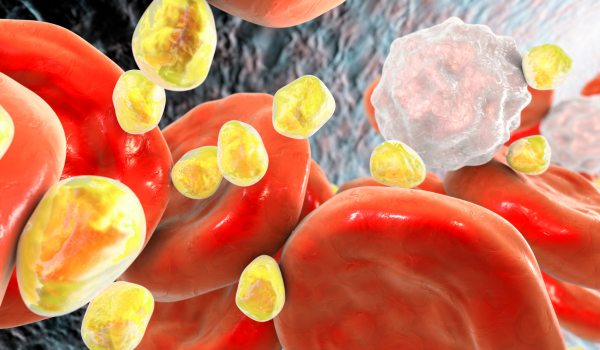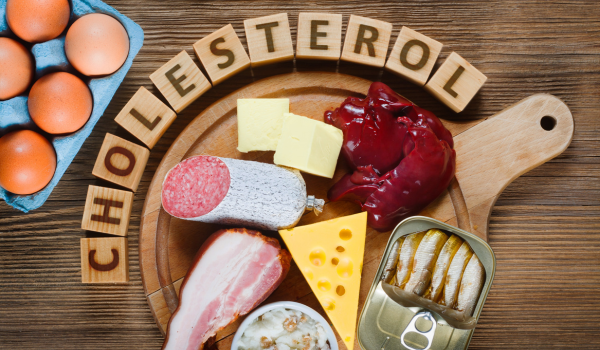Cholesterol is a waxy substance produced by the liver and found in foods like meat, dairy, and tropical oils. While often viewed negatively, cholesterol is essential for health. Problems arise when cholesterol levels—particularly low-density lipoprotein (LDL)—become too high.
High cholesterol, also called hypercholesterolemia or dyslipidemia, increases the risk of heart disease. Genetics, age, poor diet, and lack of exercise all contribute to higher cholesterol levels.
Types of Cholesterol
Cholesterol itself is not harmful; it plays vital roles in cell structure, hormone production, vitamin D synthesis, and bile salt formation. The risk comes from imbalances in cholesterol types.
ldl cholesterol
LDL, often called “bad” cholesterol, contributes to plaque buildup in arteries. Plaque consists of fat, cholesterol, and calcium, which can block blood flow and raise the risk of heart attack or stroke.
hdl cholesterol
HDL, known as “good” cholesterol, helps protect the heart by carrying LDL away from the arteries to the liver for removal. Low HDL levels are associated with higher heart disease risk.
total cholesterol
Total cholesterol is the sum of LDL, HDL, and a portion of triglyceride levels. Triglycerides are a type of fat in the blood that also affect heart health.
non-hdl cholesterol
Non-HDL cholesterol is calculated by subtracting HDL from total cholesterol. It includes LDL and very low-density lipoprotein (VLDL), which carries cholesterol and triglycerides to tissues. High levels increase cardiovascular risk.
High Cholesterol Symptoms
High cholesterol rarely produces noticeable symptoms. In severe cases, especially with familial hypercholesterolemia (FH), signs may appear.
corneal arcus – a white, gray, or blue ring around the cornea caused by cholesterol deposits.
xanthoma – fatty deposits forming lumps under the skin, often on elbows, knees, hands, feet, or buttocks.
Causes of High Cholesterol
Several factors can lead to high cholesterol:
-
diet: Diets high in saturated and trans fats from fried foods, baked goods, red meat, full-fat dairy, and tropical oils raise LDL.
-
genetics: Conditions like FH impair the body’s ability to recycle LDL cholesterol.
-
sedentary lifestyle: Lack of physical activity lowers HDL cholesterol.
-
smoking and alcohol: Both habits raise total and LDL cholesterol and may lower HDL.
-
stress: Chronic stress raises cortisol, which stimulates cholesterol production.
Risk Factors
Certain factors increase the likelihood of developing high cholesterol:
-
age: Cholesterol metabolism slows with aging.
-
family history: A strong family history of high cholesterol raises risk.
-
health conditions: Obesity, diabetes, and metabolic syndrome negatively impact cholesterol.
-
medications: Some drugs, including steroids and beta blockers, may raise LDL or lower HDL.
Diagnosis
Cholesterol is measured with a blood test called a lipid panel. The test may require fasting beforehand.
A lipid panel measures:
-
HDL cholesterol
-
LDL cholesterol
-
Triglycerides
-
Total cholesterol
Normal levels:
-
HDL: ≥ 60 mg/dL
-
LDL: < 70–130 mg/dL
-
Total cholesterol: < 200 mg/dL
Treatments
Treatment depends on the cause of high cholesterol. Lifestyle changes are often the first step, followed by medications if needed.
avoid smoking – Quitting smoking improves HDL and lowers cardiovascular risks.
eat a balanced diet – Focus on fiber-rich fruits, vegetables, whole grains, legumes, nuts, seeds, and healthy fats like olive oil. Limit saturated fats found in butter, cheese, red meat, and processed foods.
exercise regularly – Aim for at least 150 minutes of moderate-intensity activity weekly to raise HDL and lower LDL.
manage weight – Losing even a small amount of weight can improve cholesterol balance.
medications – If lifestyle changes are not enough, a healthcare provider may prescribe statins, cholesterol absorption inhibitors, bile acid sequestrants, fibrates, or PCSK9 inhibitors.
Prevention
A heart-healthy lifestyle is key to keeping cholesterol in check. This includes:
-
Avoiding smoking
-
Eating nutrient-dense foods
-
Exercising consistently
-
Sleeping well
-
Limiting alcohol intake
-
Managing stress
Adults should have their cholesterol checked every five years. Men ages 45–65 and women ages 55–65 may need testing every one to two years.
Complications
If untreated, high cholesterol can lead to atherosclerosis—the hardening and narrowing of arteries caused by plaque buildup. This condition may result in:
-
Angina (chest pain)
-
Carotid artery disease
-
Heart attack
-
Peripheral arterial disease
-
Stroke
A Quick Review
Cholesterol is necessary for health, but excess LDL can damage the heart and arteries. High cholesterol often has no symptoms, making regular testing essential.
Healthy lifestyle habits—such as a balanced diet, physical activity, stress management, and not smoking—can keep cholesterol levels within a safe range. In some cases, medication may also be required to prevent serious complications like heart disease and stroke.




